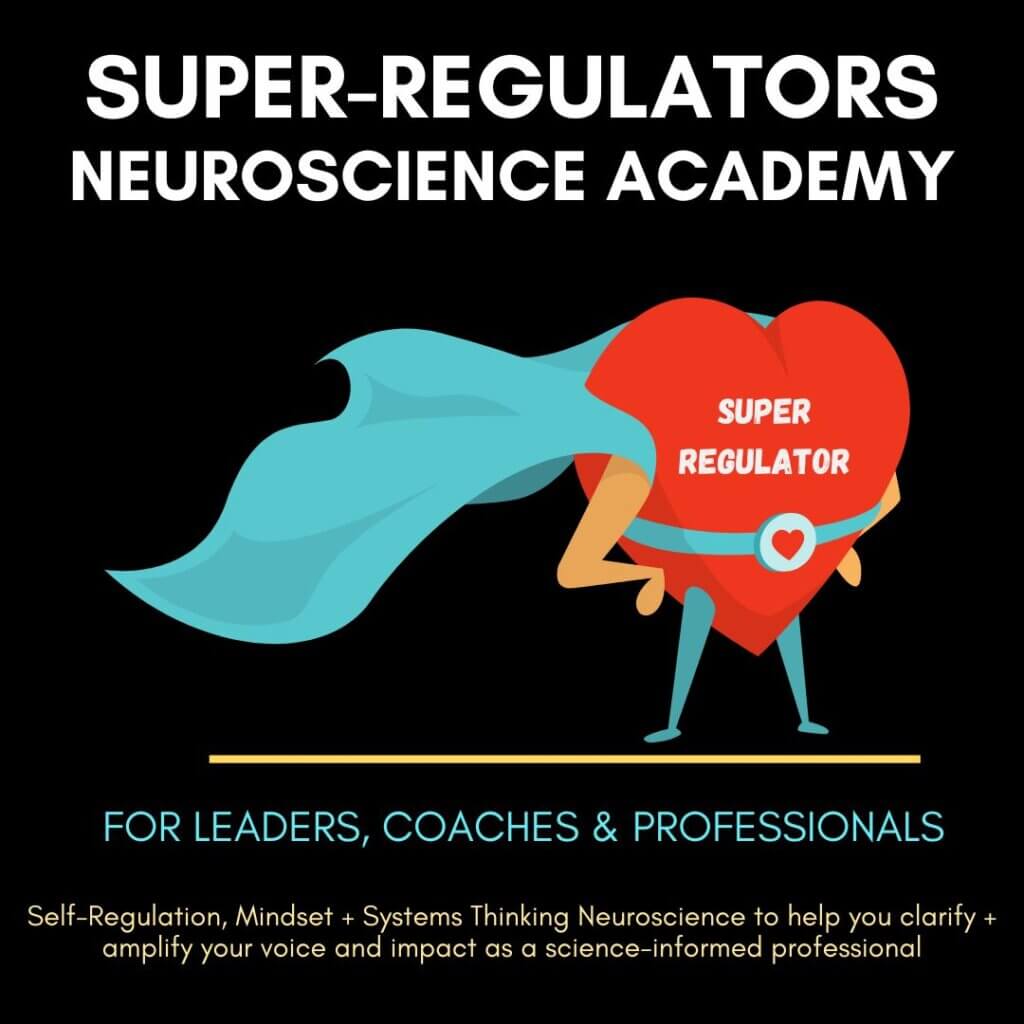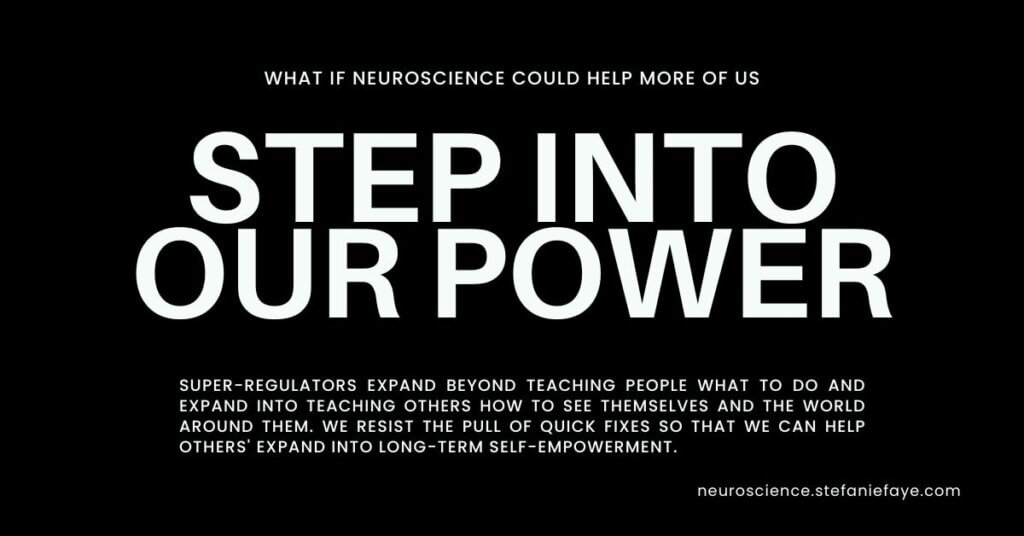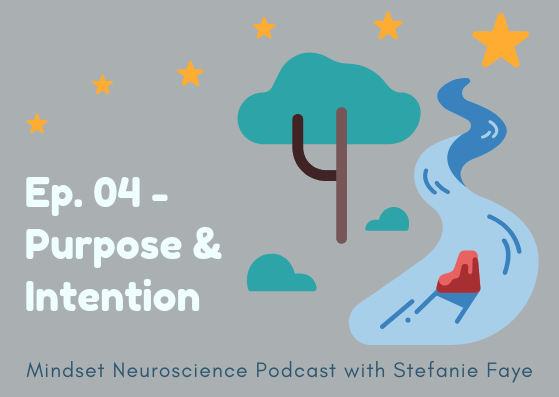We are living in an age of unprecedented disconnection—from ourselves, from each other, and from the innate wisdom our nervous systems carry.
Within each of us lies a profound capability that evolution has spent millions of years perfecting: our neurobiological legacy.
This isn't just about surviving; it's about thriving in the fullest expression of what it means to be human.
The Three Pillars of Neurobiological Legacy: Systems, Self-Reg, Self-Transcendence
Systems Thinking: Seeing the Whole
"Stop Asking 'What's Wrong With Me?' and Start Asking This Instead"
We've been taught to isolate problems. To pinpoint what's broken. To fix ourselves in isolation.
But our brains don't exist in isolation—they're embedded in bodies, relationships, communities, and ecosystems.
Systems thinking invites a question to shift our mindset: from "What's wrong with me?" to "What's happening within and around me?"
When we adopt this mindset shift of looking at one isolated part, to expanding our systems lens, we stop seeing problems and start seeing patterns.
We stop looking at isolated events and start recognizing relationships—between our sleep and our emotions, our childhood experiences and our current 'grown-up relationships', our mindset and our reactiveness to online interactions, our connections and our capacity for resilience.
Your nervous system doesn't just respond to threats. It responds to the meaning you make of your experiences, the quality of your connections, and the coherence of the stories you tell yourself.
As Donella Meadows wrote: "We can't impose our will on a system. We can listen to what the system tells us, and discover how its properties and our values can work together to bring forth something much better than could ever be produced by our will alone."
What becomes possible when you see yourself as part of an interconnected whole rather than an isolated problem to be solved?
System-Related articles & resource:
Season 2 Episode 1 - Systems Thinking
Wisdom Questions to help your brain: information overwhelm to agency
Self-Regulation: The Foundation of Agency
Self-regulation isn't about control or suppression. It's about flexibility—the ability to upregulate when life calls for action and downregulate when rest and integration are needed. It's about building resilience not through toughness but through responsiveness.
Think of your nervous system like a musician mastering their instrument. True mastery isn't playing one note louder. It's having access to the full range—from whisper-soft to crescendo, from stillness to dynamic movement.
The nervous system is constantly processing millions of bits of information, determining what deserves our attention and what can be filtered out. Self-regulation is what allows us to participate in this process consciously.
Before transformation can happen, regulation must come first.
A dysregulated nervous system can't integrate new insights or sustain behavior change. It's too busy surviving to start thriving. When we can regulate ourselves effectively, we reclaim our agency. We become response-able rather than simply reactive.
This capacity for self-regulation literally rewires our neural architecture. Repeated experiences of successful regulation strengthen the connections between our prefrontal cortex and limbic system, enhancing our ability to respond rather than react, to pause rather than panic, to choose rather than have our most automated reactions choosing for us.
Today- this year- it is more important than ever to get better at regulating our emotions and nervous systems.
Self-Regulation related articles:
Super-Regulators Neuroscience: the TOP 2 self-regulation skills that will make us better humans
Here is an article with 5 keys to getting better at self-regulation
How to not take things personally: The science of stimulus-response - StefanieFaye
Purpose: The North Star of Integration
Our nervous systems function differently when we have a sense of purpose. Purpose isn't a luxury—it's a neurobiological necessity. It helps our brain filter information more effectively and interpret difficulties as part of a meaningful journey.
Moreover, purpose connects us to something larger than ourselves, fulfilling a deep neurobiological need for belonging and contribution. Our nervous systems are social organs, shaped by and for connection. When our individual purpose aligns with collective wellbeing, we tap into powerful regulatory resources through our sense of mattering, of being part of something significant.
Fulfilling Our Neurobiological Legacy
When systems thinking, self-regulation, and purpose converge, we begin to embody our neurobiological legacy—the cumulative wisdom of millions of years of evolution. We move from survival mode into generative mode, from fragmentation into integration, from coping into creating.
3 Tips for Coaches: Integrating These Principles Into Your Work
- Expand Your Assessment Lens (Systems Thinking) Before diving into solutions, help clients map their system. Ask: "What else is happening in your life right now? How are your relationships, sleep, work environment, and physical health interconnecting with this challenge?" Create a visual map together showing how different life domains influence each other. This shifts clients from self-blame to curiosity and reveals leverage points for change that individual-focused approaches miss.
- Track Regulation Before Transformation (Self-Regulation) Start every session with a brief nervous system check-in. Teach clients to notice their own body, breathing, hand grip, eye gaze (direction and speed), and breathing. See if this gives insights for them to recognize if their nervous system is in a state of threat or openness to learning. Before exploring challenging topics or setting ambitious goals, invite them to reflect: "What does my body need right now (and for that task) to feel like it has enough resources?" Regulation comes before revelation. A dysregulated nervous system can't integrate new insights or sustain behavior change.
- Connect Goals to Legacy (Purpose) Move beyond surface-level goals by asking: "If you accomplish this, what becomes possible in your life? Who else benefits? What matters most about this to you?" Invite yourself and the people you serve to explore how their individual goals connect to their larger sense of purpose and contribution. When the nervous system recognizes that the work serves something meaningful beyond immediate comfort, it accesses deeper reserves of resilience and motivation.
The path to neurobiological legacy is a practice—of seeing ourselves as part of systems, recognizing the value of a regulated nervous system, and aligning our actions with a sense of purpose.
Our brain-body systems capacity for collective regulation and intelligence calls us to continuously evolve, reflect, and strive for these pillars of wisdom.
Purpose-related articles:
How to skyrocket human resilience: range, repertoire, purpose
How to inspire a sense of purpose using neuroscience
The Science of How to Build Our Most Powerful Brains w Dr. Immordino-Yang
How purpose and transcendent thinking affect the brain
"We are not just homo sapiens, we are homo docens - the species that teaches itself"
- Stanislas Dehaene
As coaches, leaders, guides and healers - and as Homo Docens.. . we can help humans tap into their neurobiological legacy.
The world needs us. Now more than ever.
p.s.- The next podcast will be about how war shapes the brain and how human brains shape war. We’ll explore how our mental models affect our perception of reality. We’ll talk about self-knowledge as a key gateway to a better humanity.
p.p.s- these are the pillars of the Super-Regulators Neuroscience Academy. The 2025 program SOLD OUT. Register below for future programs and other collective learning experiences.
References:
Dehaene, How We Learn (why brains learn better than any machine - for now)

In the Super-Regulators Neuroscience Academy, we explore how we - as leaders, teachers and professionals can help ourselves and others break old cycles and embody new ways of leading and relating—often more powerfully than any script or training manual ever could.
We are part of a community that is moving beyond using neuroscience in surface-level ways and moving into connecting our work with nervous system regulation, mindset and systems thinking as gateways for embodied self-leadership.
The 2025 program has SOLD OUT!
JOIN THE WAITLIST AND GET UPDATES FOR THE 2026 ACADEMY

*I’m honored to be a part of a community translating ideas from science to everyday wisdom for human flourishing as part of an amazing initiative sparked by MIT. We will be meeting with members of Geneva Science Diplomacy Anticipator (GESDA.global) this November. GESDA is a multilateral initiative mobilizing scientists, diplomats, private sector and citizens to anticipate emerging scientific discoveries and translate them into concrete actions for the benefit of society. - I’ll keep you updated about any free resources you can access in relation to this!


